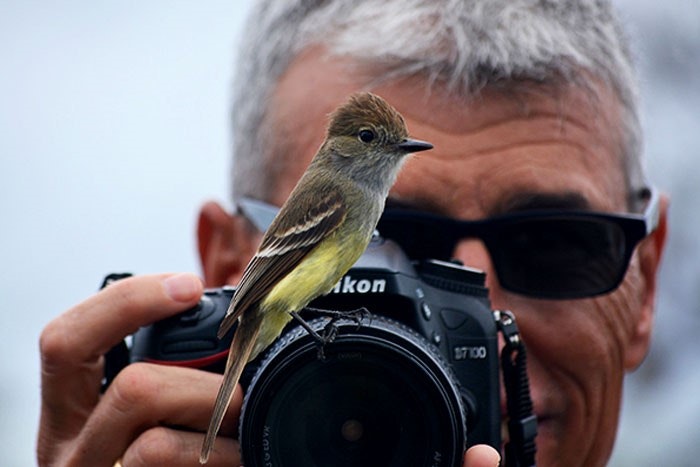Visiting the Galapagos Islands in the Time of COVID

I just returned home after 21 amazing days guiding in the Galapagos Islands.
After nearly one year at home hearing only bad news about COVID-19, I have to admit I had a lot of concerns about leading trips in a time when we all feel unsafe doing the most trivial activities. I thought that being in a ship, even a small ship, might feel like I was risking my health and other’s people well-being. I also though travelers might feel too nervous, too tense to really enjoy the trip.
So I tried from the very beginning to show our travelers that we were taking the pandemic seriously, that we will do our best—crew, me and everyone onboard—to keep them safe. I also tried hard that the trip will feel normal and enjoyable.

So what has been done to reopen the Galapagos Islands?
Everyone, locals or tourists, entering the Galapagos has to arrive with a negative PCR COVID test taken no more than 90 hours (~4 days) before landing in the islands. Although this is not an absolute barrier for the virus, it is a serious effort to try to detect those few people that could be carrying it. Second, all the crew are routinely tested for COVID and are not allowed to disembark to any of the towns in the islands while they are working for 8 straight weeks, which means they don’t have any contact with anyone except the COVID-tested tourists. We don’t visit any restaurants, hotels or any place where we could meet “outsiders.” We form our little bubble of crew and tourists, with zero contact with the rest of the world. And when I say zero, it is absolute zero contact because we did not see anyone during our visits.
And yet… just in case, everyone, including travelers and crew, is constantly monitored by the captain to detect possible symptoms of COVID as early as possible. Everybody’s temperature is taken twice a day, masks are mandatory, especially in indoor areas, and washing hands and using hand sanitizing alcohol becomes part of the routine.
All the travelers I had in several consecutive trips felt the same way: we are better here than if we were at home, as here we have zero contact with anyone outside our ship!
It seems to work. So far, thousands of visitors have travelled to the islands since tourism resumed in August and none have become sick with COVID.
And the Galapagos, oh—the islands are as beautiful as ever! There is one major difference: the animals are there, but humans are not. After a relatively cold 2020 (a good thing for marine wildlife), the beaches are full with healthy sea lion pups and the bird colonies booby chicks grow healthy while frigate birds perform their energetic courtships. Sea turtles and marine iguanas are having a great nesting season and there are animals everywhere. Some people claim that there are more animals because there are fewer people, but I honestly don’t think so. There are more animals because last year happened to be a cold year, which means more food in the ocean. I did not see any major change in the fauna of the Galapagos and the animals continue to ignore us in the same wonderful way they did before COVID, when there were ten times more visitors than today.
What makes visiting the islands so special right now is that it is like getting transported 30 years ago when I started guiding. In the great majority of places we visited, we were the only humans in sight, often the only people in the entire island. There where not even other ships on sight in the distance. It felt like we had the whole Galapagos to ourselves. It might sound selfish, and maybe it is… but what an extraordinary feeling! The sense of wonder, the privilege of feeling like those explorers and scientists who came many decades ago, is something that enhances the close contact with sea lions, penguins, iguanas, seabirds…
We all know this situation will not last forever. As soon as the pandemic is controlled people will return to visit this natural wonder, with the same respect as always, but sharing the islands with many other visitors.
Lack of tourism to the islands has not been precisely a blessing for the Galapagos, as some people might think. Without tourism, there is far less money for conservation programs. Many of the projects which are essential to preserve the native fauna and flora, such as eradication of invasive species, came to a stop because of lack of money or the impossibility of scientists and park rangers working in the field. There is a concern that the lack of tourism could, in the long term, put more pressure on the resources as locals are forced to look for other sources of income.
In every way, I felt privileged to be traveling around the islands in COVID times. It felt safe, the islands are gorgeous, and we were all very thankful to be working and the travelers where very happy to be traveling.
So if you are wondering if this is a good time to come to the Galapagos… you have the answer. Join us!